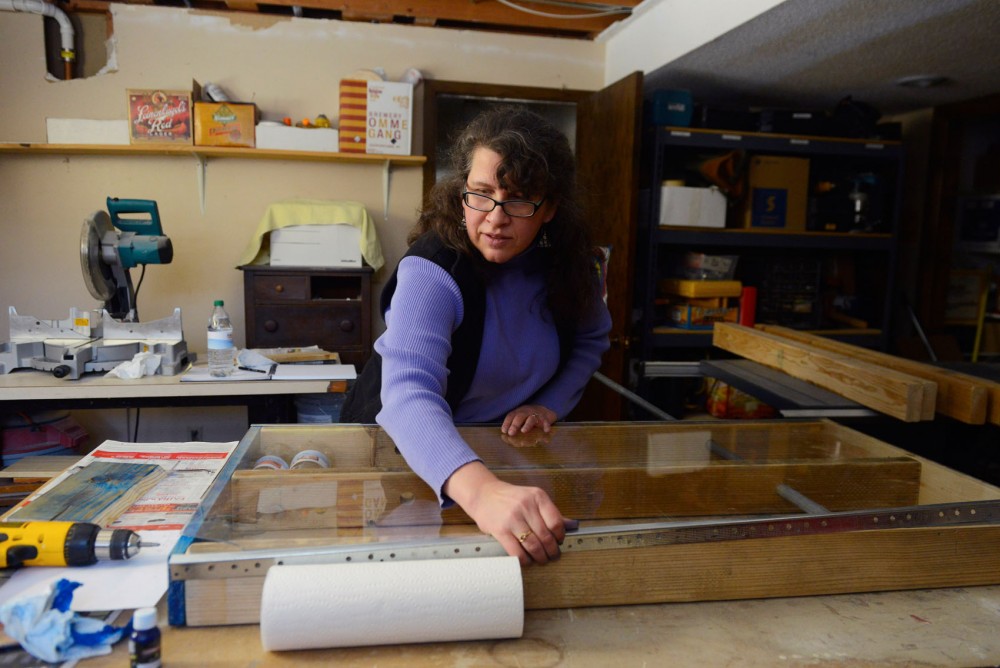Jonee Brigham, an associate fellow of the Institute on the Environment, has a hard time explaining things without a visual representation.
While discussing one of her art education projects, she stopped mid-sentence to bring up a photo she said would better tell the story — a snapshot of a young girl watering a tiny, green plant.
The girl was a part of Brigham’s “Earth Systems Journey” education project, which Brigham discussed on Wednesday at the University of Minnesota. Using art forms like photography, drawing and music, the project aims to educate children on water processes.
Lessons on the environment can be challenging to teach, experts say, but art can make them easier to understand and is a method for promoting environmental issues that’s growing in popularity.
“One of the things art does is kind of help make the environment more relevant,” Brigham said. “It helps recast environmental issues as not just scientific issues or just something that regulators, scientists and politicians are figuring out.”
Art-led education can empower people to live more sustainably and supports a number of environmentally friendlysuggestions, like those from the Minnesota Pollution Control Agency, Brigham said.
She said her work incorporates some of MPCA’s guidelines, like emphasizing environment issues’ relevance and making some issues that can’t be seen, like air pollution, visible.
Sarah Nassif, an independent Minneapolis artist who studied botany, now teaches area elementary students about plant varieties.
She said she uses art to teach about the environment because it’s approachable and accessible for all ages.
Nassif said traditional environment education can sometimes be intimidating because a lot of the information is pessimistic. But art and observing nature, she said, can be a stepping-stone that leads to interests in issues like climate change or pollution.
“Nature is there for everybody, and it’s universally accessible,” Nassif said. “But sometimes it’s like being at a party where you don’t know the names of any of the people, and it’s like, ‘I don’t know what I’m supposed to be doing here,’ or ‘Why should I care?’ Sometimes you need somebody to introduce you.”
The University has recently introduced classes that use art for teaching about the environment, such as “Art and Ecology: The Greening of the Imagination,” which starts in the fall.
Associate art professor Christine Baeumler has been encorporating environmental issues, like extinction and land degradation, in her paintings for about 20 years and now teaches some of the University’s new classes.
“Given the kind of issues that we are facing environmentally, it really requires us to exercise our imagination, whether we’re artists or students or scientists,” she said.
Baeumler has seen several students at the University engage in projects involving art and the environment in and outside of class, she said — especially recently.
But using art to connect people to the environment isn’t a new concept, said University art history professor Jane Blocker, who teaches about the history of art and the environment.
Even centuries ago, artists said landscape paintings inspire feelings of beauty or a connection with the environment, Blocker said.
In the 1960s, artists began taking on the role of environmental activists, she said, and the practice has continued since.
“I can point to individual artists who’ve been doing this for a long time,” Blocker said. “But I think that there are a couple of trends that are happening.”
Minneapolis Instinct Art Gallery director John Schuerman said he thinks one of those trends is promoting social change through art.
“Art is a vehicle, and it’s always there to help usher in social change, and I think that that will always be one of the roles that art plays,” he said.
Though Schuerman has been curating art shows for about a decade, he said he wasn’t presented with environmentally-themed shows until a few years ago. He has worked on four since.
Brigham said one reason environmental art could be gaining momentum is because interdisciplinary approaches to education are increasing in popularity.
She said she knows from experience that it’s easier to be passionate about something after seeing it or hearing its story in an engaging way.
“I’m interested in visual expression, and I think there’s a way to work towards environmental change from any way of seeing,” Brigham said.








